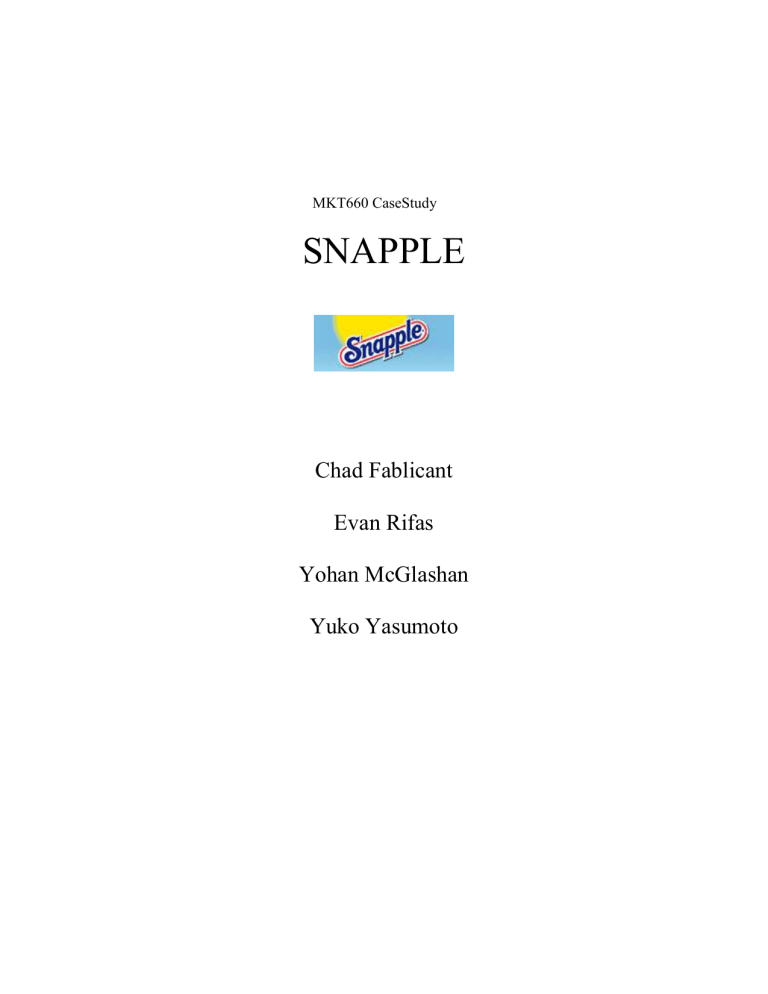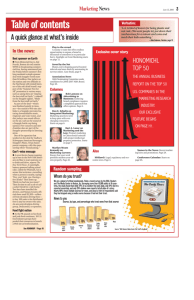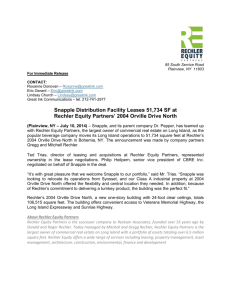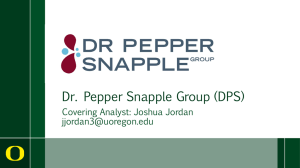The story of Snapple, which started off as a great small business

MKT660 CaseStudy
SNAPPLE
Chad Fablicant
Evan Rifas
Yohan McGlashan
Yuko Yasumoto
In the early years there are several elements that explained Snapple’s success. The first was its ability to capture and dominate a new niche market. This was accomplished by recognizing a trend in consumer behavior: the health consciousness consumer. Seeing this new market emerge permitted the drink maker to start trying its beverage and to cater to that market.
Starting off small allowed the company to invested in itself with its own revenues. There were no loans for productions, or money borrowed for distribution, in fact distributors were eager to carry the new product. Product development and differentiation of flavors played key role in success. Snapple decided that it could give consumers several flavor possibilities while remaining a niche drink (see appendix). As the company grew, they improved their distribution while not passing addition costs on to the consumer. By not raising prices and being more available Snapple was on the road to success.
With its “100% Natural” campaign, Snapple set the standard for its market image. Snapple’s management not only thought of present day situations, it had thought well into the future. This was made evident with the decision to put together an advertising campaign followed by the decision to seek professional management.
Snapple’s new promotional strategy also helped to intensify its hold on the alternative beverage category.
Although Snapple started of as a great small business it turned into one of the more difficult beverages to make profitable. The original product was a success; it captured a niche market and took advantage of its market leader position. When the company was sold to the corporate giant Quaker Oats, the problems began. There are two
main factors that can be attributed to Quaker Oat’s failure with Snapple. Quaker Oats did not have the marketing muscle required to make the product a success. They thought that they could follow a similar model that they used on Gatorade, which was completely inadequate for a drink in Snapple’s niche market. They made fatal errors, which damaged relationships with Snapple distributors. For example, as Quaker Oats took over
“Snapple”, they abolished the successful interdependent distributor system, established by Carl Gilman, a beverage veteran from Seven-up. Instead, Quaker had changed to a mass marketing strategy. Along with company caused problems Snapple encountered distribution troubles with the rise in popularity of soft drinks. (see appendix)
Another error they made was that it terminated the endorsement deals originally placed by Gilman, with Howard Stern and Rush Limbaugh, two highly renowned radio personalities. Both Stern and Limbaugh brought an added element of brand recognition, and eventually helped to build up loyal consumers. Another factor that led to Snapple’s reduced market is that unlike the demand for “New Age” drinks, Quaker acquired
Snapple at the companies most profitable point, when it was at its peak, not realizing the tough times and new competition ahead. The “New Age” and Iced-tea markets experienced increased competition, and the cola makers lower cost production methods for iced-tea provided a similar beverage, with a cheaper consumer cost.
Snapple’s next owner, Trairc had a lot to learn from Quaker’s business model.
Triarc’s managers should understand that Quaker’s model for Snapple was not successful and that the mass marketing strategy was its downfall. What might have worked for
Gatorade did not work well for Snapple. Snapple was seen as being quirky, offbeat product that was trendy and different and distributed to that effect. Quaker tried to
implement Snapple into the larger outlets and gave more emphasis to supermarkets. This made the allure of the beverage all but disappear in the minds of consumers. Snapple was no longer a niche market drink. They found great success with the “Wendy” advertising campaign, by reaching out to the real every day person. This cross of advertising and promotion made the every day consumer feel good about drinking Snapple.
Weinstein, a former experienced beverage executive brought the “small business attitude back to the company, something Snapple desperately needed. Triarc’s decision to have Weinstein run Snapple shows that they were heading in a positive direction for the company.
There are many things that Snapple could do to fix its image and revive its sales.
Most importantly, Snapple needs to go back to its roots and what originally made it a success: its strong distribution chain. Although things have changed since the early 90’s the proper distribution is still a key element missing in the companies current plan.
Snapple needs to reclaim its “niche market and provide the consumer with a great tasting health conscious beverage.
Wendy, the innovative and creative advertising campaign brought the beverage to a new level. It brought out a personal touch that differentiated it from the competition. (see appendix) With the buyouts and sale of the company that personal touch was lost. By simply redefining the personality of the beverage Snapple could and will have a long running and profitable future. In the years to come Snapple regained its market share, and is today under a different owner a successful and profitable beverage.
APPENDIX
Snapple Flavors
% of cases in 1996
1) Lemon Tea 15%
2) Kiwi Strawberry 7%
3) Mango Madness 5%
4) Peach Tea 5%
5) Pink Lemonade 5%
6) Diet Peach Tea 4%
7) Fruit Punch 4%
8) Raspberry Tea 4%
9) Diet Lemon Tea 3%
10) Diet Raspberry Tea 3%
Top 10 of 50 flavors 55%
DECREASED CONSUMPTION PG 26
MEANING OF WENDY pg 29


